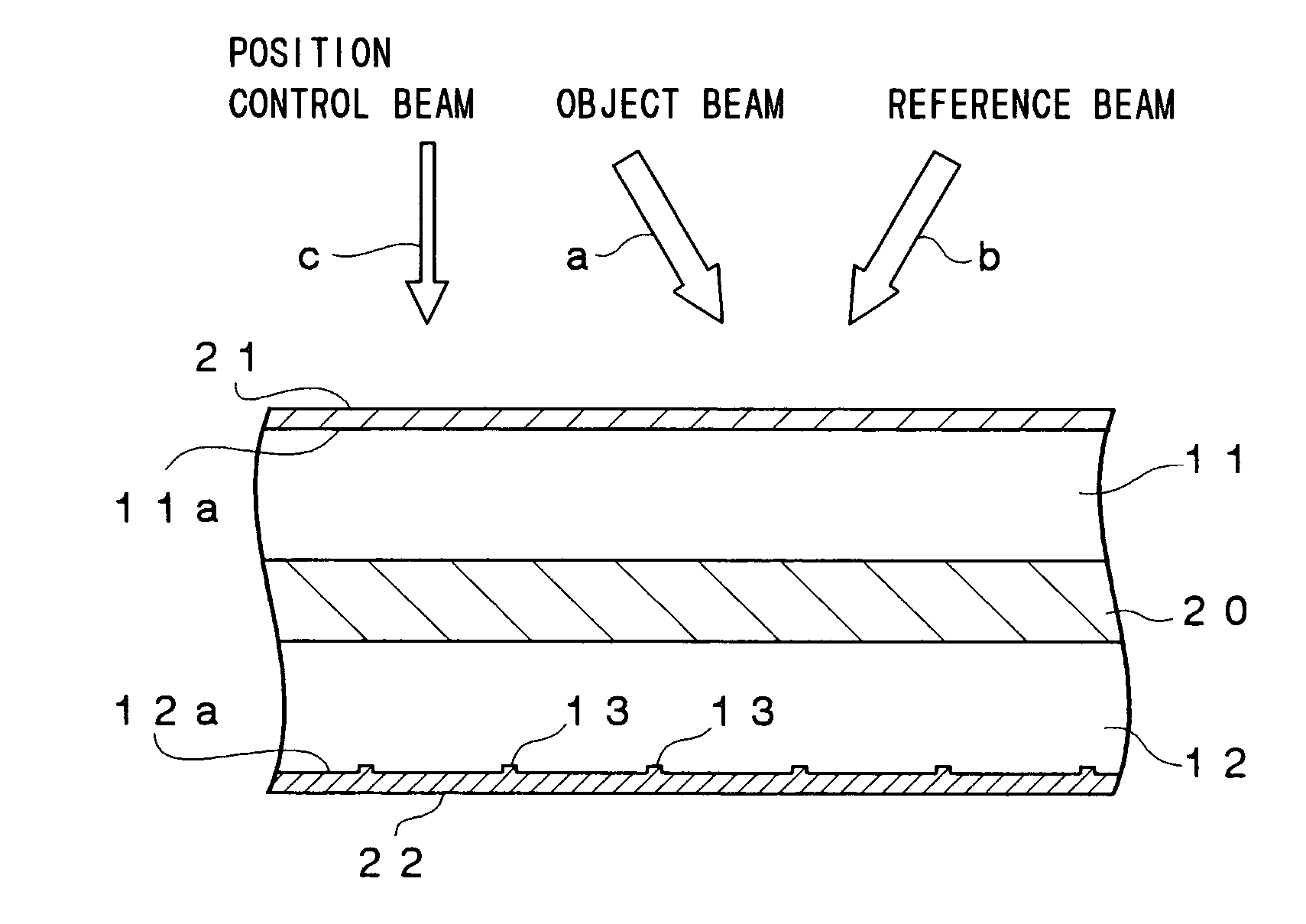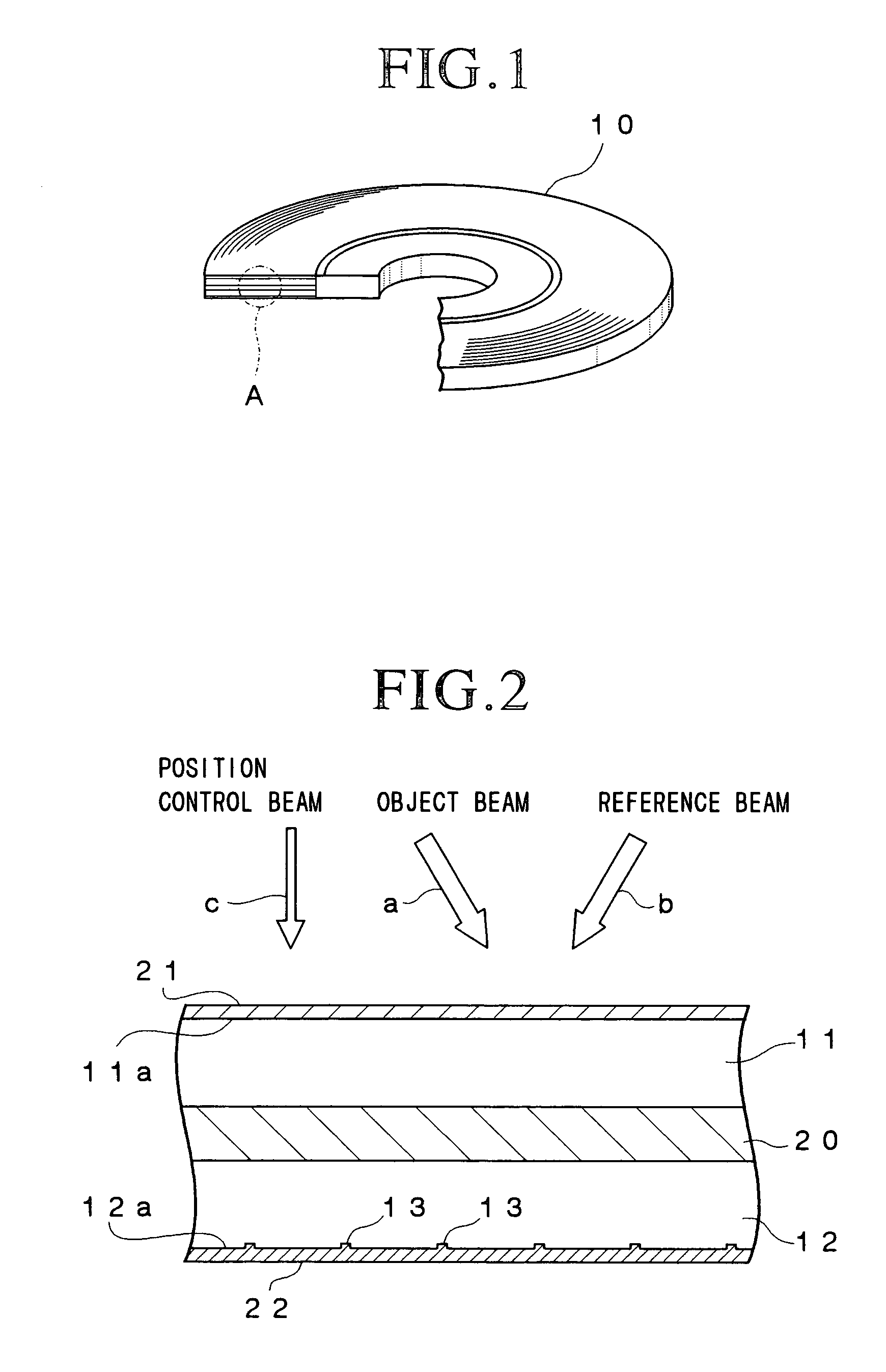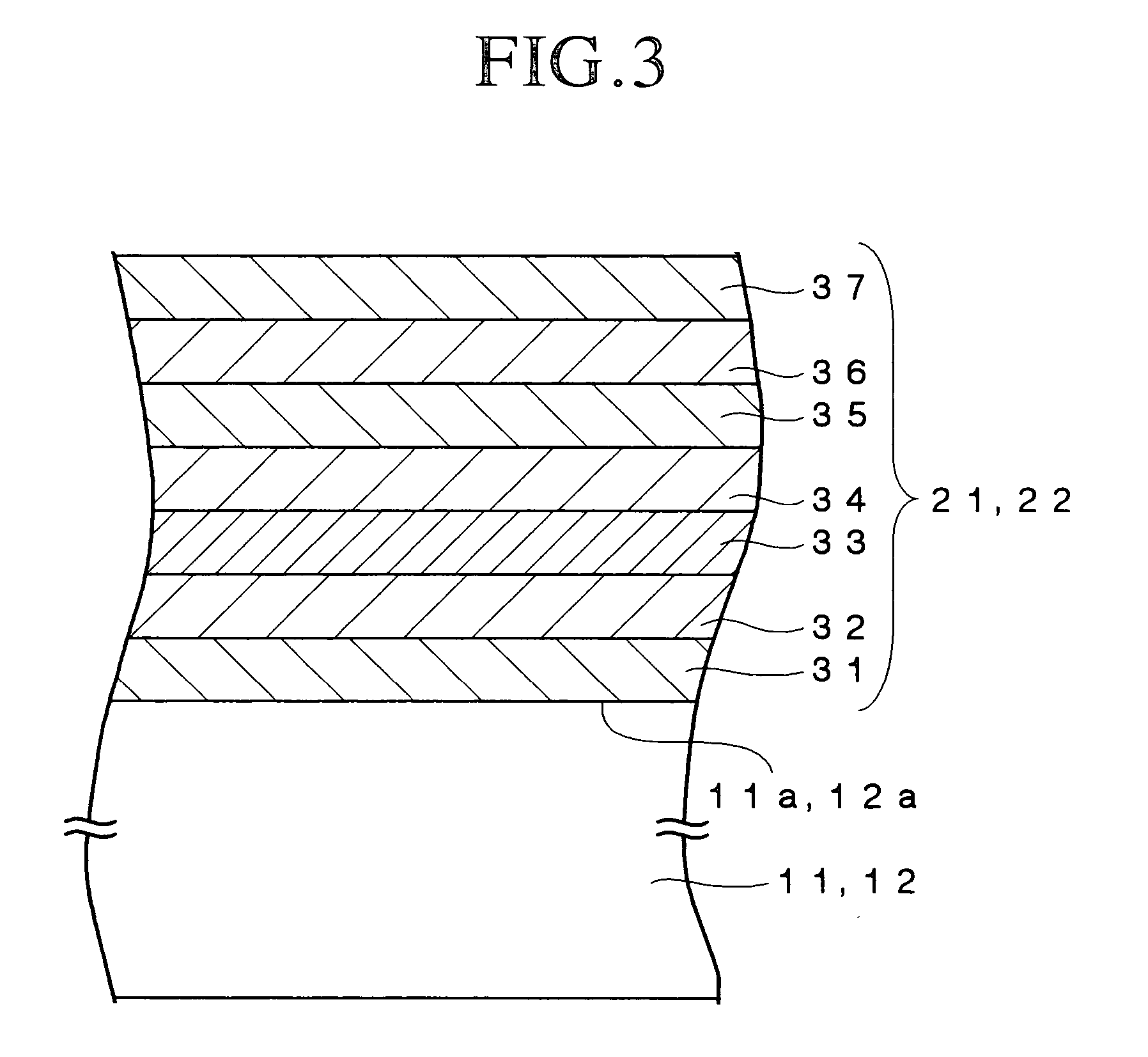Holographic recording medium
a recording medium and holographic technology, applied in the field of holographic recording mediums, can solve the problems of generating noise in the recorded signal or the reproduced signal, affecting the quality of the recorded signal,
- Summary
- Abstract
- Description
- Claims
- Application Information
AI Technical Summary
Benefits of technology
Problems solved by technology
Method used
Image
Examples
working example 1
[0115] An amorphous polyolefin substrate having a thickness of 0.6 mm and a refractive index of 1.52 was prepared and an inorganic film having a thickness of 87 nm and a refractive index of 1.39 and made of a mixture of MgF.sub.2 and SiO.sub.2, an inorganic film having a thickness of 91 nm and a refractive index of 1.75 and made of Y.sub.2O.sub.3, an inorganic film having a thickness of 66 nm and a refractive index of 2.40 and made of TiO.sub.2, an inorganic film having a thickness of 76 nm and a refractive index of 1.75 and made of Y.sub.2O.sub.3, an inorganic film having a thickness of 129 nm and a refractive index of 1.39 and made of a mixture of MgF.sub.2 and SiO.sub.2, an inorganic film having a thickness of 94 nm and a refractive index of 1.75 and made of Y.sub.2O.sub.3, and an inorganic film having a thickness of 110 nm and a refractive index of 1.39 and made of a mixture of MgF.sub.2 and SiO.sub.2 were formed in this order on the amorphous polyolefin substrate using a sputte...
working example 2
[0125] A sample #4 was fabricated in the manner of the sample #1 except that a soda lime glass substrate having a thickness of 0.6 mm and a refractive index of 1.52 was employed instead of the amorphous polyolefin substrate, and a sample #5 was fabricated in the manner of the sample #2 except that a soda lime glass substrate having a thickness of 0.6 mm and a refractive index of 1.52 was employed instead of the amorphous polyolefin substrate.
[0126] When the relationship between the reflection coefficients of the sample #4 and the sample #5 and the wavelength .lambda. of a laser beam were measured, similar results to those for the sample #1 and the sample #2 were obtained.
working example 3
[0127] The reflection coefficients of the samples #1, #2 and #3 were measured by projecting a double YAG laser beam having a wavelength of 532 nm thereonto at various incidence angles.
[0128] The measurement results for the sample #1, sample #2 and sample #3 are shown in FIGS. 7, 8 and 9, respectively.
[0129] As shown in FIGS. 7 to 9, it was found that even when the incidence angle of the laser beam was varied over a wide range from 0 to 60 degrees, the reflection coefficients of the samples #1, #2 and #3 remained substantially equal to or lower than 0.5% and did not exceed 1.0%.
PUM
 Login to View More
Login to View More Abstract
Description
Claims
Application Information
 Login to View More
Login to View More - R&D
- Intellectual Property
- Life Sciences
- Materials
- Tech Scout
- Unparalleled Data Quality
- Higher Quality Content
- 60% Fewer Hallucinations
Browse by: Latest US Patents, China's latest patents, Technical Efficacy Thesaurus, Application Domain, Technology Topic, Popular Technical Reports.
© 2025 PatSnap. All rights reserved.Legal|Privacy policy|Modern Slavery Act Transparency Statement|Sitemap|About US| Contact US: help@patsnap.com



